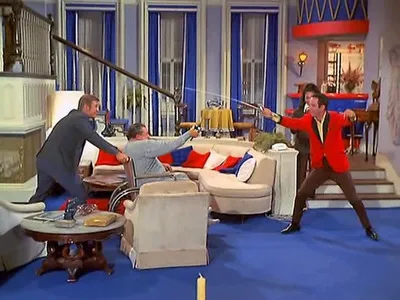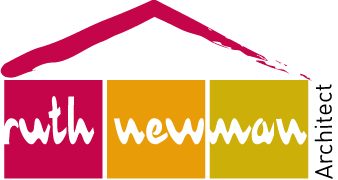
Maxwell Smart - A design guru?
The development of the television has had a major impact on the lives of its viewers since it became available to most people in the 1940’s and 1950’s. Along with the subsequent lifestyle changes, came a whole new way of influencing consumers and extending ideas to the masses. Based on this the TV networks recognised that the style of the house and its furniture and fittings were an important factor in the success of a program, as well as the fashion and the story line. The most successful, and popular shows in the Retro period included all of these items and are seeing a resurgence of the popularity of the style today.
The style of this period included the development of the open plan living area, the use of open mezzanine floors and open stairwells linking the downstairs living spaces to the upstairs bedroom areas. Dark greens, yellows, pinks and oranges were very popular and were used for wallpaper, carpets, sofas, cushions and drapery. With such a dominant theme to décor in this era it was important that the television shows be accurate examples that viewers could relate to.
There were a number of series in the 1960’s that used these elements that are still relevant today for the aficionados of the Retro style.
Bewitched
‘Bewitched’ was a comedy fantasy broadcast from 1964 to 1972 involving a witch who marries a mortal. It is still regularly seen on both ‘free to air’ and cable television. The design within Darrin and Samantha’s home changed throughout the series, with furniture often being changed by a ‘twitch of a nose’. The set illustrated many of the motifs of the era.
A kitchen with avocado and orange cupboards with a feature display of coordinated coffee mugs on the shelf above the bench, sunbeam kitchen appliances in the background and an adjacent laundry area with avocado appliances were the epitome of style. The living room was often the focus of entertaining for Darrins advertising colleagues with its shag pile rug, designer furniture and the retro accessories. The set was designed to reflect the wealth and success of the family, as well as who they were meant to be.
The Brady Bunch
Another popular show incorporating the Retro style was ‘The Brady Bunch’. The show was often set in the kitchen with its bright orange and timber fitout, and widely sought after dinnerware and kitchenware. The living area was a formal area with Knoll style chairs, timber and stone features along with an avocado green feature wall. The whole idea of this house was to not be too affluent or to blue collar. It needed to look like a place an architect would live.
Get Smart
The satirical spy show, Get Smart, also effectively utilised the design style of the 1960’s. The white curved lounge and bright cushions in Max’s apartment with the open staircase behind leading to the mezzanine area was a major features in many scenes with Max and Agent 99. The apartment reflected the overall look of the period, open and clean.
The headquarters of Control was decorated with the distinctive dark timber design with dark leather chairs, with the highlight of the office being the ‘Cone of Silence’, the moulded plastic screen that lowered from the ceiling reminiscent of the polypropylene furniture and accessories of the 1960’s.
I Dream of Jeannie
I Dream of Jeannie was aired in the late 1960’s and consequently the style of the set in this show reflected the changing styles of home design. Major Nelsons House had a verandah or outdoor entertaining area that was often seen in the background, the typical orange kitchen and an abundance of designer furniture items. However the highlight of this show was Jeannie’s bedroom in the bottle, surely the envy of many a young girl who grew up in the late 60’s.
Each of these TV shows, along with series such as The Avengers, Batman and The Saint effectively reflect the minimalism of the Retro style as well as celebrating the new trends and points of view of the era.
by Ruth Newman
